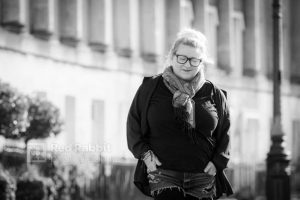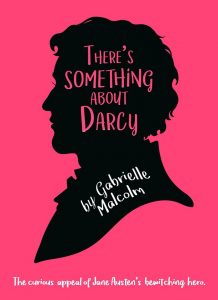 A lovely summer’s day at Chawton House and Library in 2015.
A lovely summer’s day at Chawton House and Library in 2015.
Picture the scene. Tea and biscuits; fans, academics, and actors from the 1995 series mingle. Twenty years on and the BBC Pride and Prejudice adaptation prompted passion, interest, and curiosity at this anniversary conference. I think that the Chawton House Trust could have sold out the event about ten times over!
It was great to be able to say, I was there. I’m fortunate in my location in the UK. I can attend events in Bath and Hampshire with ease.
I stood in the kitchen at Chawton and had some tea. Another visitor asked me if I had played Charlotte Lucas in the 1995 series! I’ll tell you now – I look nothing like Lucy Scott! I think people were getting a little starry as the time for the Q&A drew near. They were seeing P&P actors everywhere! Polly Maberly (Kitty), Susannah Harker (Jane), Crispin Bonham-Carter (Mr. Bingley), Joanna David (Mrs. Gardiner), Benjamin Whitrow (Mr. Bennet) were actually there. Plus, Jane Gibson, the series choreographer, and Simon Langton the director.
It was during that day that some ideas began to crystallise for me. This started with the vision that Simon Langton described as he plunged back into the anecdotes of making the series. Foremost, of course, was the fact that both he and writer Andrew Davies did not think that Colin Firth would make a very good Darcy at first. The actor needed some intervention, consisting mostly of hair dye it turns out.
What Langton also nailed for me was the creative dynamic that formed when he and Davies took on Austen’s work. This brilliant trio brought the realisation of the book to the screen. For example, he commented on the bravery of Davies as a script writer of classic fiction. You could not, he said, hope for better source material and a writer who could take it on with such confidence. We might think of that as we read the negative reactions to the recent ITV serialisation of Sanditon. It takes courage to approach Austen’s work, even if we don’t admire the results so much, we can admire that.
Langton also reminded his audience of the different imperatives that featured in Austen’s fiction and how their intangibility could be made into real and exciting action for television. This, he stressed, particularly involved her satire. He did not have to labour it, he and Davies just had to let it breathe. Whether that was Collins (David Bamber) and the occasion of the shelves in the cupboard at Hunsford, or flashback scenes that proved to Mr. Darcy his aunt could proffer comments just as inappropriate and gauche as Mrs. Bennet in polite company.
There was the symbolism of the horses too. This might have passed a lot of viewers by. Langton explained that the pairing of Darcy and Bingley in the opening shots of the first episode depicted their gallop across the fields as a display of social hierarchy. Bingley is on a grey and Darcy on a black hunter. Darcy easily outstrips his friend on his superior mount. Elizabeth looks down from her vantage point on a hillside.
By the time that Darcy is in his transitional phase of change and growth, and once he meets Elizabeth again at Pemberley, his horse has changed from black to white. He is, at the point he dives into the lake (in the infamous ‘sexy’ scene) a knight on a white charger. He speeds away from Derbyshire to Lydia’s rescue as Elizabeth’s champion. Langton liked to make references to traditional story-telling as part of his televisual language. From complexity and subtlety to symbolism and clarity.
Following this fortunate encounter at Chawton, I had the distinct privilege of hosting Simon Langton’s Q&A at the Jane Austen Festival in Bath in 2017. This occasion gave me the chance to hear more, and investigate further, his process of making influential television. When I was considering how I could introduce him before a packed hall of fans, it occurred to me that his position at the festival was second only to that of Austen herself. I was able to voice that. Simon’s accomplishment with the 1995 P&P is probably the most important factor, after the novels themselves, in bringing Austen fans from around the world together.
For me, these experiences helped to pinpoint my approach to writing about Austen and the Austen global culture. I noted the reactions to the events at Chawton and Bath as much as the content and the words and anecdotes from the participants. The enthusiastic, appreciative response to Simon Langton’s talks was very moving. When I offered the thanks on behalf of the audience and the festival organisers to him in 2017, he received a standing ovation. That was emotional, as for some minutes people were on their feet for this talented man. His reaction only added to how moving it was – he was baffled and bewildered at this. He did not think it was for him! I leaned over to him and said, “They really love you, Simon. You work means the world to them.” I think he might have just heard me over the clapping!!

Gabrielle Malcolm’s new book ‘There’s Something About Darcy’, is published by Endeavour Quill on 11th November.

3 comments
How lovely was that! I so enjoyed Gabrielle Malcolm’s guest appearance. And I look forward to reading this book. Thank you Maria. Great good luck on her book launch.
Thanks for sharing this information with us. I thought the comments about the horses being different for different scenes was insightful.
Wow, what a great an incredible post about the anniversary of as well as the behind the scenes glimpses into directing this amazing mini-series!!
Many thanks!!
Warmly,
Susanne 🙂